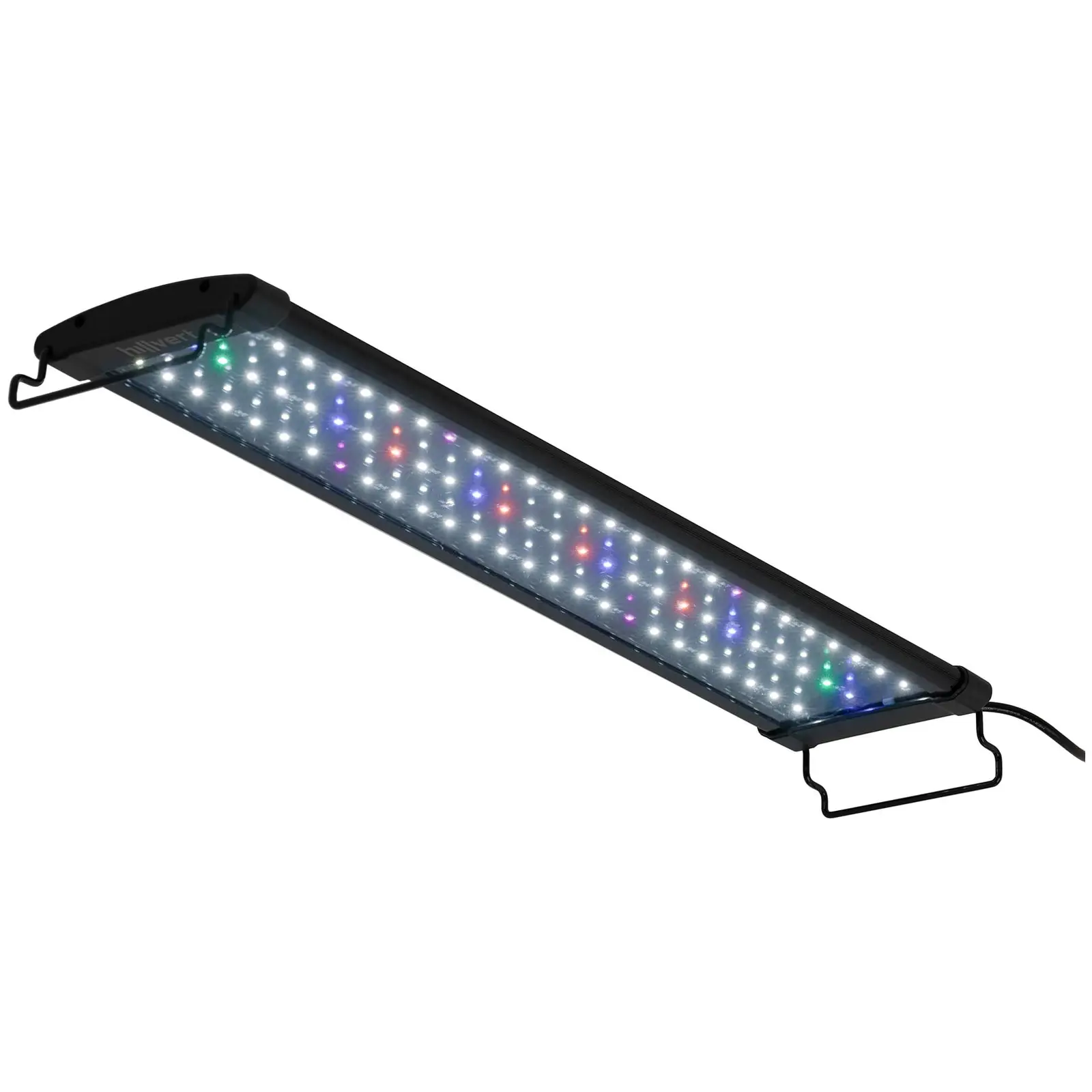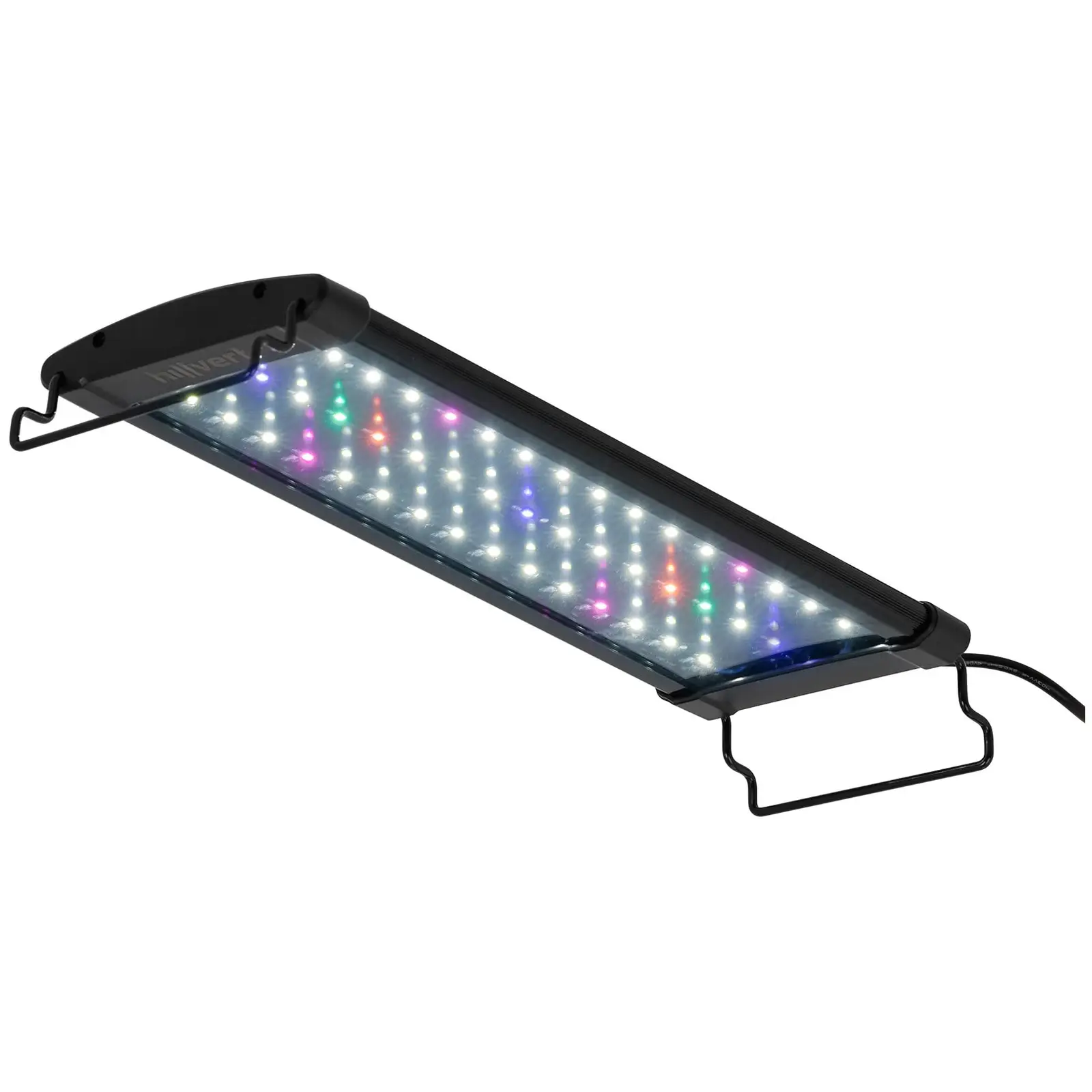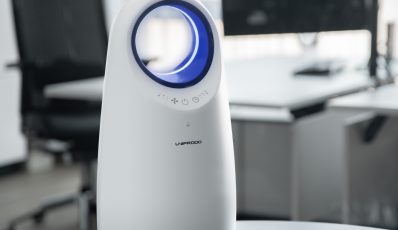Bring a sense of calm to your home with your very own oasis! Watching fish glide gracefully through vibrant aquatic plants is not only soothing but also creates a stunning, living centrepiece in your home. In our article, we'll guide you on how to turn your aquarium into a peaceful sanctuary in which the gentle movement of its inhabitants sets the mood for relaxation.

Bring a sense of calm to your home with your very own oasis! Watching fish glide gracefully through vibrant aquatic plants is not only soothing but also creates a stunning, living centrepiece in your home. In our article, we’ll guide you on how to turn your aquarium into a peaceful sanctuary in which the gentle movement of its inhabitants sets the mood for relaxation.
- The Big Decision: Freshwater or Saltwater?
- What Size Aquarium is Right and Where’s the Best Spot?
- The Basics: Filter, Heater, Lighting, and Substrate
- Aquarium Accessories: Extras for a Functional and Attractive Tank
- Setting Up an Aquarium: Perfectly Combining Plants, Stones, and Decorations
- Aquascaping Styles: IIwagumi, Ragwork, Ryuboku and Mizube
- Conclusion: The Art of Aquarium Design
The Big Decision: Freshwater or Saltwater?
Setting up an aquarium starts with one big question: Do you want a freshwater or saltwater tank? Freshwater tanks are ideal for fish naturally found in lakes, rivers, and ponds. Saltwater aquariums, on the other hand, are perfect for marine species. If you’re new to aquariums, we recommend starting with a freshwater aquarium. It’s easier to maintain and more affordable overall. Plus, freshwater fish require less upkeep than their saltwater counterparts.
What Size Aquarium is Right and Where’s the Best Spot?
The size of your aquarium and its location go hand in hand, with both crucially impacting the wellbeing of your fish. A well-chosen size gives your aquatic friends enough space to flourish and helps create a stable, healthy environment. Where you place it matters too – it affects both ease of care and how great it looks in your home. In the next sections, we’ll guide you on how to pick the right size for your tank and find the perfect spot for it:
What Capacity is Suitable for Beginners?
Don’t be fooled – smaller tanks can actually require more work than bigger ones. Small tanks make it harder to maintain a balanced ecosystem and need more frequent water changes. Cleaning is also trickier due to the limited space. Aim for around 5 litres of water per fish, while also allowing room for plants, decorations, and other features. For a 60-litre aquarium, this means you can house ten fish instead of twelve. For an easier start and simpler upkeep, go for a tank between 60 and 200 litres.
Is a Goldfish Bowl a Good Idea?
In films and TV shows, goldfish seem to happily swim around in a chic round bowl. However, goldfish bowls are actually considered cruel nowadays. The fish swim in endless circles while the shape distorts light unnaturally and dangerously. Moreover, poor gas exchange due to the bowl’s shape leads to oxygen deficiency, and the small capacity makes it tough to maintain a balanced environment. Filters, heaters, or lighting covers cannot fit in such bowls either. Plus, the limited base offers little room for plants or helpful bacteria. That’s why goldfish bowls are today considered a no-go when it comes to keeping healthy fish.
Where’s the Best Place for an Aquarium?
Aquariums make stylish centrepieces, so they deserve a prominent, visible spot. Place your tank in a hallway, living room, or office to showcase it as a decorative element. Make sure to use a sturdy, durable base or cabinet that is resistant to moisture and can handle the weight of hundreds of litres of water – you’ll find suitable models in specialist stores. Avoid placing the aquarium in the middle of the room, as it risks being knocked over and stresses the fish from all-round observation. Steer clear of spots with direct sunlight or close to heaters. Sunlight and heat increase the water temperature, encouraging algae growth. Instead, place the tank in a shaded area. Don’t worry about a lack of light – special lamps, which we’ll cover later, will provide the necessary lighting.
The Basics: Filter, Heater, Lighting, and Substrate
Filters, heaters, and lighting are the essentials of any aquarium. The filter keeps the water clean, the heater ensures a stable temperature, and the lighting supports both plants and fish. The aquarium substrate forms the foundation for a healthy tank. These components work together to create a thriving underwater world. Let’s dive into each one in detail:
Aquarium Filters: The Key to Clear Water
Filters play a crucial role in maintaining a healthy environment in your tank. They remove debris, waste, and harmful substances from the water, keeping it clear and clean. Filters also support the biological balance by housing beneficial bacteria. With regular maintenance and cleaning, filters help keep the water fresh, ensuring your fish thrive in a healthy habitat. There are three main types of aquarium filters:
- Mechanical filters remove larger particles and visible debris by running the water through filter media such as ceramic rings, sponges, or textiles.
- Biological filters house beneficial bacteria that convert nitrogen and nitrite compounds into less harmful nitrates, promoting balance in the tank.
- Chemical filters, like activated carbon or nitrate and phosphate removers, eliminate chemical impurities, odours, and colours from the water. They complement mechanical and biological filtration, helping to reduce specific contaminants.
For most aquariums, a combination of mechanical, biological, and chemical filtration offers the best water quality and stability. The filter you choose depends on the tank size, number of fish, and specific needs of the aquarium.
Heaters and Thermometers: Optimal Conditions for Your Fish
The aquarium heater ensures a constant water temperature, essential for the health and comfort of your fish and plants. Heaters or heating mats installed inside or along the tank prevent temperature fluctuations. For tropical aquariums, which require temperatures between 24 and 28°C, a heater is a must. Coldwater tanks, like those for goldfish, need temperatures of 18 to 22°C. Digital, analogue, or floating thermometers continuously monitor water temperature, allowing you to quickly adjust the heater. A well-functioning thermometer helps maintain the ideal temperature, ensuring your aquarium stays stable and suitable for your fish.
Aquarium Lighting: The Key to Healthy Plant Growth and Vibrant Colours
Aquariums are often placed far from windows, receiving little natural sunlight. Special lighting, usually attached to the tank’s cover, fills this gap. Fluorescent lamps or LEDs simulate daylight, promoting the photosynthesis of plants. This lighting brightens even the darkest areas, creating a cosy atmosphere in your room. This way, the aquarium provides optimal conditions for its inhabitants and a stylish lighting feature to your home.
Aquarium Substrate: The Foundation for a Healthy Tank
The aquarium substrate anchors plants and supports their root growth. Various substrates like gravel, sand, or specialised soil have different properties and uses. Gravel is easy to clean and offers a stable surface. Sand is perfect for fish that like to dig around the bottom. Special aquarium soil helps water plants grow by storing nutrients. The right substrate not only enhances your aquarium’s appearance but also promotes plant health and fish wellbeing. Make sure to create a slight slope towards the front of the tank when laying the substrate.
Aquarium Accessories: Extras for a Functional and Attractive Tank
In addition to the basics, there are other accessories that make maintaining and decorating your aquarium easier. These include:
Cleaning and maintenance products:
- Algae magnets and specialised cleaning tools keep the glass spotless.
- Gravel vacuums remove food scraps and waste from the bottom.
- Glass cleaners remove algae from the tank’s glass.
Monitoring and control devices:
- Special paper and aquarium test kits check the water’s pH level, changing colour depending on the water’s condition. The ideal range is between 6 and 8.
Handy tools:
- Automatic feeders ensure regular, precise feeding, even when you’re away.
- Nets make it easier to catch fish and perform water changes.
Decorative accessories:
- Backgrounds like coral reef designs enhance the visual appeal and create an attractive backdrop.
- Decorative rocks, roots, and caves create an exciting environment for your fish.
The right selection and use of these accessories will ensure a functional, attractive aquarium and a healthy environment for your fish and plants.
Setting Up an Aquarium: Perfectly Combining Plants, Stones, and Decorations
Once you’ve got the right gear, it’s time for the exciting part – designing your aquarium. With such a wide selection of plants, stones, roots, and decorations, you can create a unique environment for your fish.
Aquatic plants form the foundation. Not only are they decorative, but they also stabilise the ecosystem. They supply oxygen to the water, reduce carbon dioxide and nitrogen, and provide food and hiding spots for fish. Choose beginner-friendly plants like Java fern or Anubias. Plant smaller varieties near the front and larger ones at the back for a harmonious sense of depth. In aquariums that are visible from all sides, tall plants look best placed centrally.
Natural decorations like rocks and roots complete your aquarium’s look. They create interesting structures and hiding spots for fish. Avoid materials from natural water bodies to prevent the introduction of bacteria or parasites. Artificial elements like replica reefs or treasure chests can add fun accents to the tank.
Aquascaping Styles: IIwagumi, Ragwork, Ryuboku and Mizube
Aquascaping recreates different natural scenes and landscapes underwater. Whether you prefer dramatic rock gardens, twisted root structures, or peaceful riverbanks, choosing the right style gives your aquarium a unique style and personal touch:
- IIwagumi is a minimalist aquascaping style originating from Japan. The term means “stone garden” and focuses on using stones to create a balanced, natural landscape. Typically, IIwagumi features three to five stones arranged in a precise, asymmetrical pattern. The emphasis is on balance and the natural beauty of the stones, often with little to no plant life. Elements are placed according to the “golden rule” or “three-point rule.”
- Ryuoh is another Japanese aquascaping style that mimics dramatic mountain landscapes with impressive visual depth. It uses large, rugged stones to recreate the wild look of rocky mountains. Minimal plants are used to enhance the dramatic effect.
- Ryuboku means “forest of roots” and uses large, twisted roots or wood to create natural, forest-like scenes underwater. The elements are arranged to resemble tree trunks you might find in a river or lake. Plants are then added to create the desired dense forest look.
- Mizube, meaning “waterside,” focuses on designing shorelines and recreating water landscapes. This style combines plants, stones, and substrates to mimic a natural shore environment. Mizube styles often include fine details like small water plants and roots that resemble the edge of a pond or river. The design aims to create a harmonious picture of water and land, giving the impression of a natural waterside.
Conclusion: The Art of Aquarium Design
Successfully setting up an aquarium requires careful planning and selecting the right components. From choosing the right substrate to arranging plants and decorations to adding accessories, every detail contributes to creating a harmonious and functional habitat. A well-designed aquarium not only offers a stunning visual experience but also ensures the wellbeing of its aquatic inhabitants.










Share